There are two agenda items related to traffic safety on the upcoming Alameda City Council agenda, and they draw a striking contrast between how the city handles traffic safety "in Alameda" and "out at Alameda Point."
In Alameda
In Alameda, staff have prepared a contract to implement what the agenda calls "the Lincoln Avenue/Walnut Street Safety Improvement Project." It's a small agenda item under the consent calendar.
Previously on April 18, 2023, when this was presented to City Council, it was called the "Immediate Safety Improvements at Walnut Street."
You might ask why the word "immediate" was removed between April 2023 and April 2024 — or you could ask why the word "immediate" was used in 2023 to begin with. The project is, I believe, in reaction to the crash that killed Fred Zehnder at Lincoln Ave and Walnut St in June 2021. In fairness, staff may have used the word "immediate" in relation to a larger proposed project along the entire length of Lincoln Ave — whether or not it was intended, the word does draw unfortunate attention to the city's slowness in responding to the fatal crash.
Leaving the wording aside, here's what the plans looked like when presented to City Council in April 2023:

And here's how the improvements are described and priced out in the contract that's on the May 7, 2024 agenda:
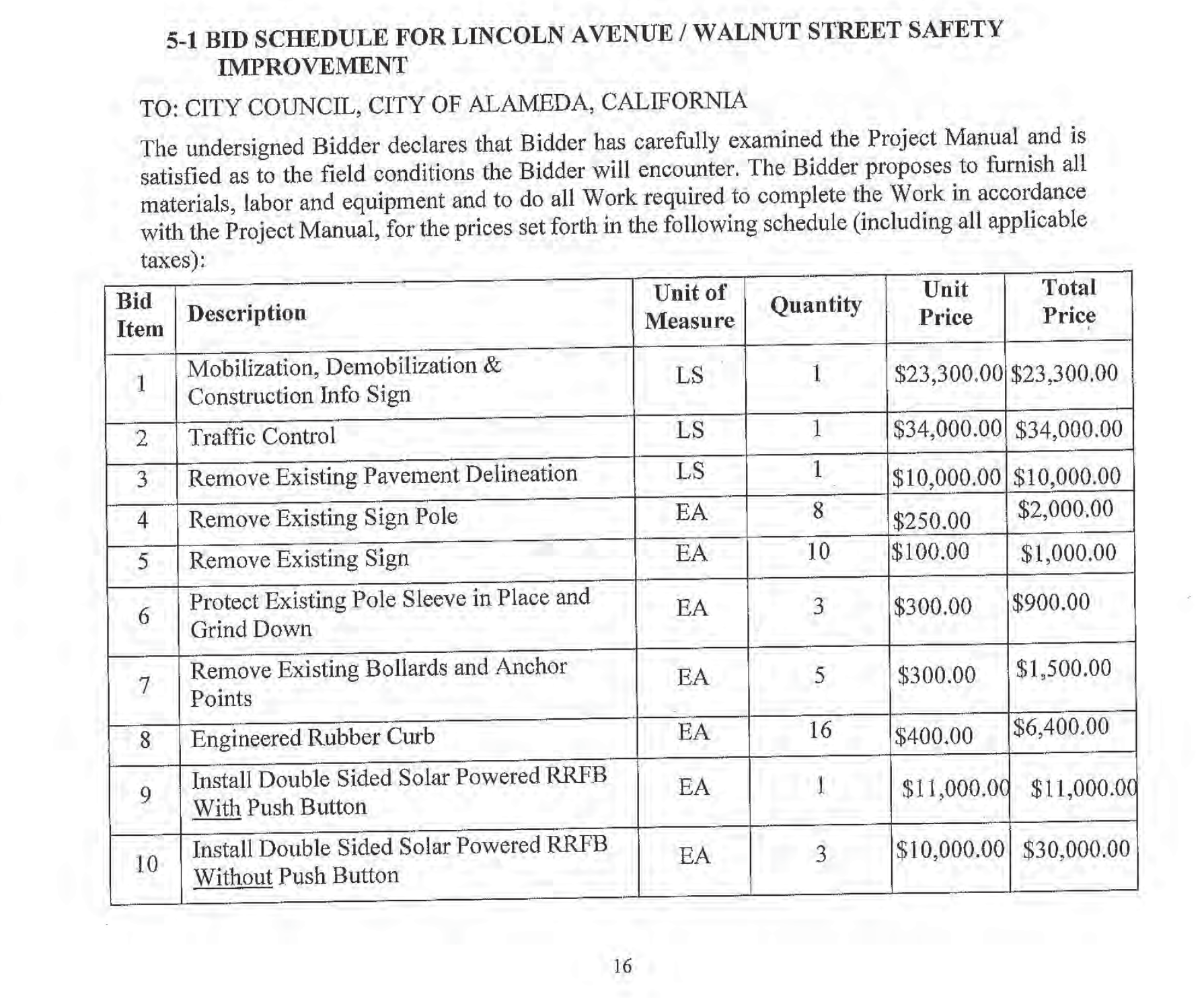
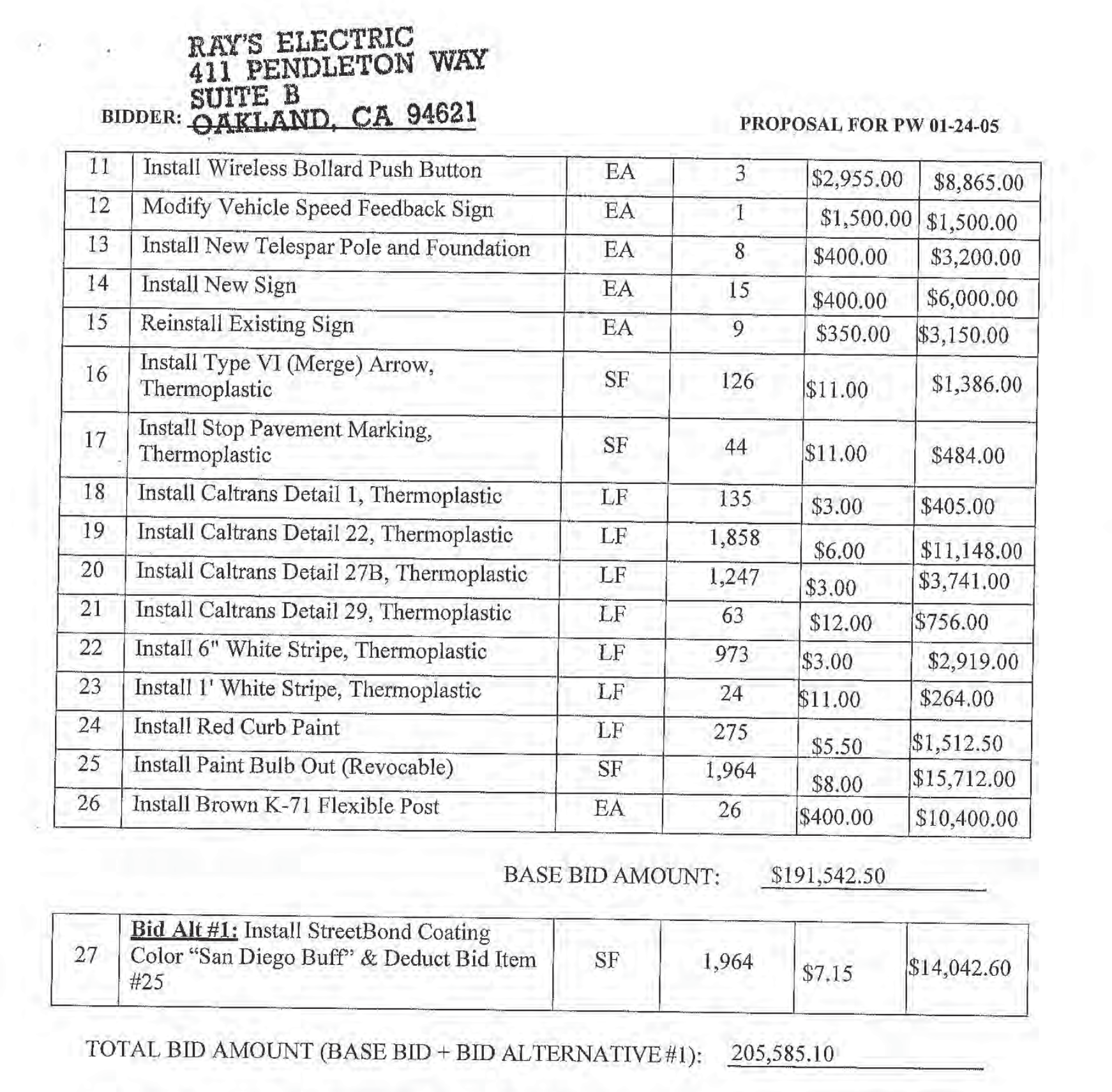
I previously wrote a mini critique of these proposed improvements in an earlier post called "Bad news along Alameda's Lincoln Ave." The changes aren't negative — but it's questionable whether they are sufficient to physically stop another driving from hitting a pedestrian, or another driver from hitting a house. (In that post I also described and linked to a news article headlined "Six-month-old Alameda twins escape injury when SUV plows into their home" — which happened at that same intersection in 2019.)
The changes do make pedestrians significantly more visible to motorists — since pedestrians will step out onto the "colorized pavement" areas surrounded by plastic flex posts, before proceeding to cross the center of the roadway where cars travel. The rectangular rapid flashing beacons also call attention to a pedestrian. But it's still up to drivers to decide to slow down or to stop — nothing about the design of this physical setting forces drivers to change their behavior. In fact, drivers are still tacitly encouraged to speed through this intersection. Drivers going east or west along Lincoln are encouraged by the view down the road to speed up to reach an intersection with a traffic light. Drivers going north or south along Walnut often need to accelerate quickly to cross Lincoln, before auto cross-traffic arrives.
This area is often peaceful... but when there are a couple drivers simultaneously going over the speed limit — or an extremely drunk driver — the design of the intersection can enable surprisingly destructive crashes.
The safety improvements at Lincoln/Walnut are both too little and too late to sufficiently address these root causes.
I bring this up, first, to provide yet another example of why the City Manager and City Council should allocate more staff positions to transportation in its upcoming mid-cycle budget process.
Second, the physical features of this project demonstrate such a light touch and a deference to motorists when compared to the solutions the city is simultaneously proposing for Alameda Point.
Out at Alameda Point
Also on the agenda for the May 7 City Council is an agenda item to stop "sideshows" at Alameda Point.
Here's a video from Richard Bangert, who's blogged repeatedly on this topic in his own blog and in the Alameda Post:
As I skimmed the staff report on this agenda item, I was reminded of the phrase most recently used by the Biden administration in the context of the COVID-19 pandemic: a "whole-of-government response."
This staff report is submitted to City Council by the City Manager, the Chief of Police, and two department directors — this is a "whole-of-city" response" that's an urgent priority for staff and a big agenda item for City Council.
As summarized in the staff report [I'll underline and bold sections that I'll discuss further and I'll interleave a few illustrations from the staff report's attachments]:
EXECUTIVE SUMMARY
Alameda Point attracts unsanctioned car shows events that often include hundreds of vehicles and large crowds of spectators, including several events over the last six months that drew hundreds of people. These large-scale activities present public safety challenges that impact the quality of life of the community, including reckless driving, excessive noise and trash, property damage, adverse impacts to adjacent businesses, traffic congestion, air quality and biological concerns, and adverse service and fiscal impacts associated with redirecting City of Alameda (City) resources to intervene and enforce these issues.
As a result of these unpermitted sideshow events, an inter-departmental team of City staff from the Public Works Department, Base Reuse and Economic Development, and Alameda Police Departments (APD), along with the City Manager’s Office developed an approach to preventing and enforcing sideshow events. These efforts include: (1) installing fencing and gates in the south of Alameda Point along West Hornet Avenue, West Ticonderoga Avenue, and Ferry Point, and temporary asphalt curb in the western areas of Alameda Point along portions of West Tower Avenue, Monarch Street and West Midway Avenue (Exhibits 1 and 2); (2) APD conducting pre-intelligence and prevention efforts; and (3) APD performing strategic and targeted intervention and enforcement to mitigate and minimize existing events and deter future sideshow activities.
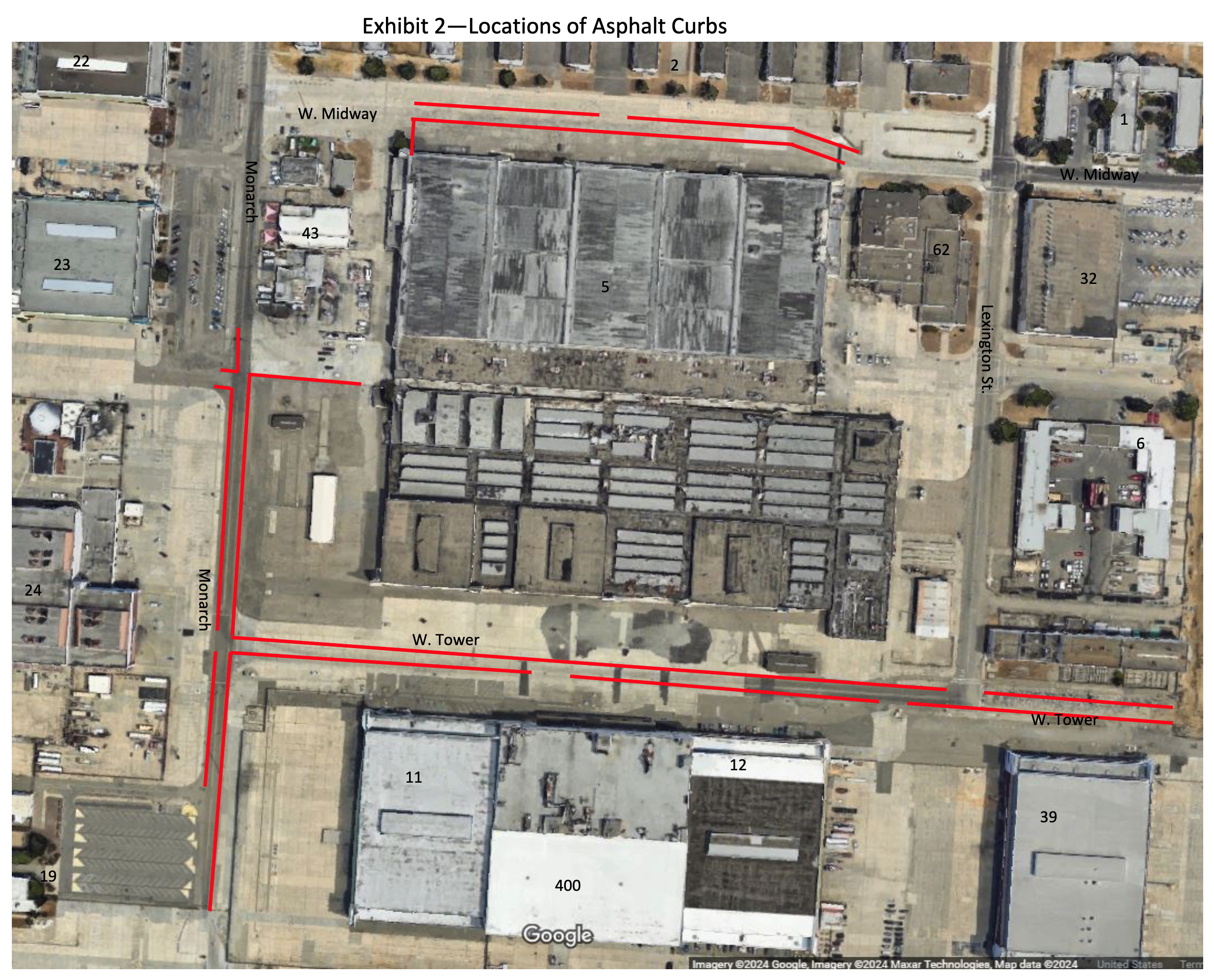
As part of the City’s enforcement approach, APD explored the use of technology, and believes that the use of drones for monitoring sideshows will allow APD to collect information about the event for strategic enforcement responses without jeopardizing the safety of officers.
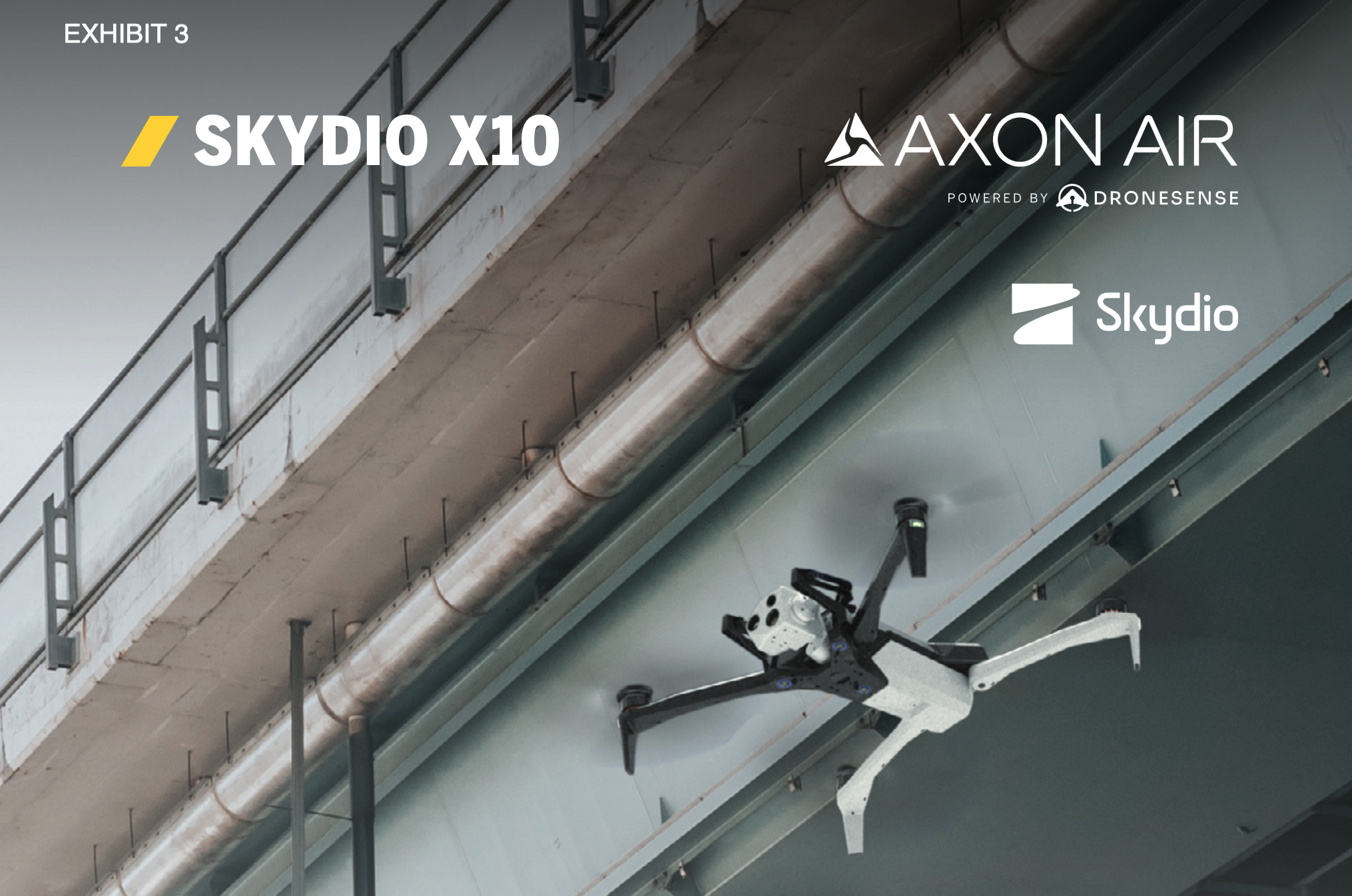
As a result, City staff are recommending that City Council provide direction to return to City Council with a public hearing, including a First Reading of an ordinance consistent with AB481 (approval of a Military Equipment Use Policy and report), to authorize the purchase and use of two drones (possibly from Axon Air) for sideshow and other critical incidents in the City (as described in Exhibit 3), along with adopting a use policy that addresses privacy concerns consistent with American Civil Liberties Union (ACLU) best practices (Exhibit 4).
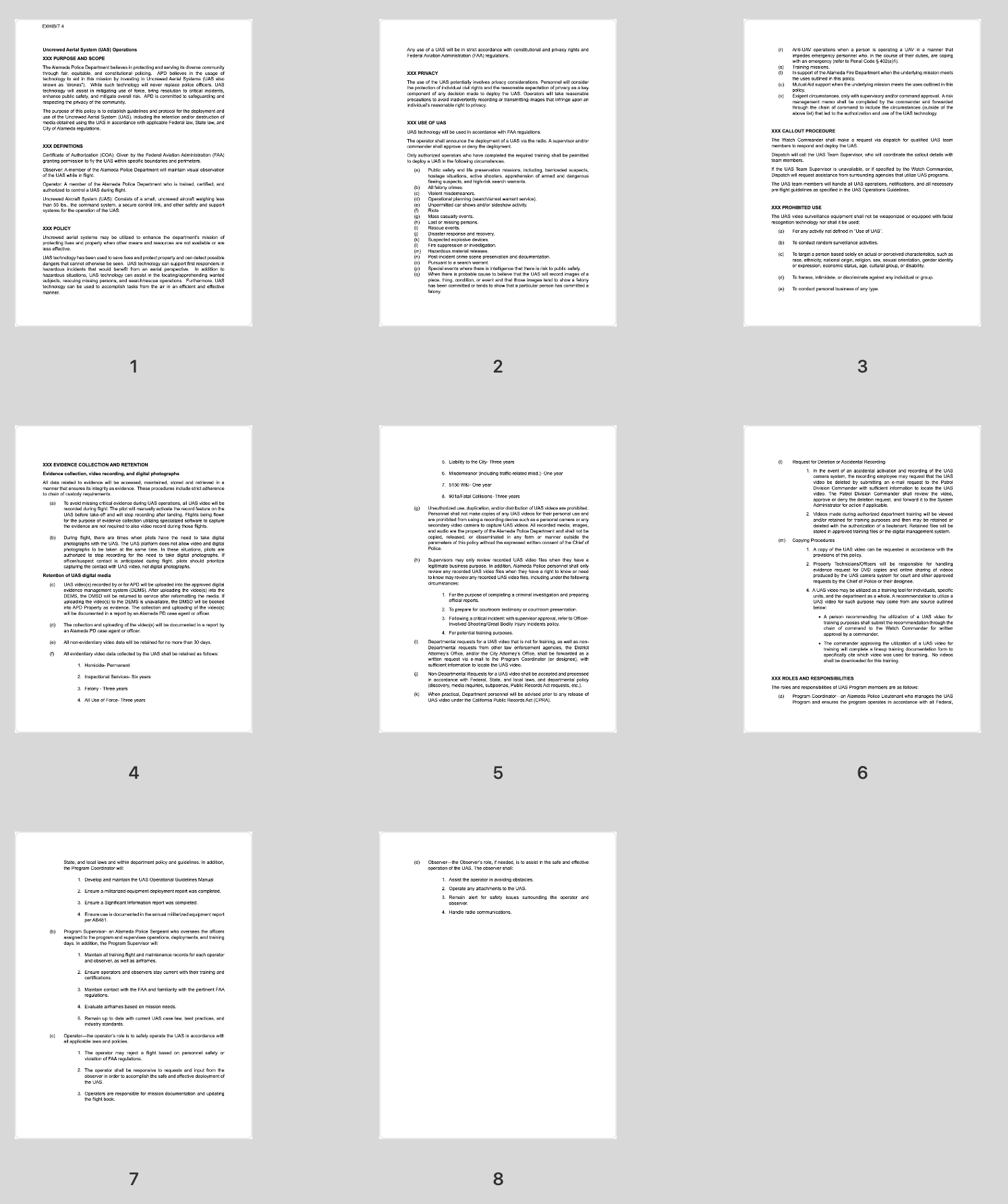
[skipping a lot of parts you can go read yourself]
FINANCIAL IMPACT
The cost of installing fencing, gates, and temporary asphalt curbs at Alameda Point is included in existing Alameda Point budgets and the purchase of Axon Air drones, if approved at a future City Council meeting, will likely be funded from the existing already approved APD budget, which could include all acquisition, training, and licensing costs for up to five years. Although staff will present more detailed costing information, if directed to return with this item on May 21, 2024, two drones are preliminarily estimated to cost approximately $144,000 over a five year term.
To summarize the parts I've underlined:
- City staff propose to use hard physical means to shut access to portions of Alameda Points to vehicles. They'll also use hard permanent materials like asphalt to reduce the width of roadways, doing so on a temporary but immediate basis (meaning they won't wait on having engineers draft more complete permanent designs; they also won't be waiting on planners to perform any public engagement).
- Staff propose that the city purchase drones for use by the Alameda Police Department. Doing so will require that the city follow a state law that regulates how local police departments buy military hardware. And doing so will also involve adopting a new city-wide policy for the use of those drones.
- And... staff propose that they'll return to City Council with the next steps on this project on May 21 — of 2024.
What a contrast!
What a contrast between the response to a pedestrian fatality at Lincoln/Walnut and the response to sideshows at Alameda Point:
- Duration and urgency: Six month's worth of sideshows at Alameda Point have triggered a "whole of city" response. A driver killing a resident on foot at Lincoln/Walnut in 2021 is just now being addressed with a change to the design of that intersection.
- Limiting drivers: Sideshows that have — to my knowledge — killed no one are being addressed with hard physical changes that limit where cars can drive at Alameda Point. The city has also recently installed "modal filters" at Alameda Point that allow pedestrians and cyclists through certain streets, while blocking auto drivers. In contrast, the intersection at Lincoln/Walnut will remain open to drivers in all directions — city staff did not propose to close any "legs" of the intersection to thru auto traffic or turning auto traffic, even though doing so would reduce both motorist-on-motorist and motorist-on-pedestrian conflicts.
- Materials: Whereas the changes at Alameda Point are using gates, poles, and asphalt (in addition to concrete barriers that have been deployed already), the changes at Lincoln/Walnut use flexible "K-71" posts, tasteful "San Diego buff" paint on the ground, and flashing lights. The materials at Alameda Point are effective at stopping drivers; the materials at Lincoln/Walnut are effective at not offending anyone's sensibilities.
- Focus and follow-through: The staff report about Alameda Point sideshows lays out specific and immediate dates for when the City Council will be updated and provide input on next steps. For traffic safety projects, the item returns to Council... well, it returns to Council whenever it's eventually ready to return to Council.
- Policy changes: The problems at Alameda Point are motivating the city to begin a policy-making process that involves state law, the phrase "military hardware," and phrase "ACLU best practices" – that sure shows a willingness by the city's leadership to use up lawyers' time and likely some political capital along the way to navigate a potentially contentious process. In this blog post, I'm not going to argue for or against APD's gaining the capability to fly drones across the entire city — [the proposed policy, as I read it, wouldn't just be limited to Alameda Point!] — I mainly want to emphasize this as a big commitment of resources to a policymaking process. Compare that to automated enforcement of speed limits: San Francisco and San Jose earned the right from the state to test automated speed enforcement; when writing about that law in 2023, I didn't consider that Alameda could have been a part of that pilot program 'cause we're just such a small city with limited staff capacity. But now compare it with the city's willingness to navigate the process of having police fly drones to figure out when and where sideshows are happening. So, why didn't the city try to get Alameda into that pilot program to test automated enforcement of speed limits? And what other policy-making tools are being left unused?
The real difference is likely that one of these projects is given a ton of staff time across multiple departments, while the other is not.
A secondary difference is that the Lincoln/Walnut location is held to such high standards of visual appearance that even "quick build" materials cost $200k and require a full contracting process — in contrast with the concrete K-rail and asphalt curbs that city staff are allowed to deploy at Alameda Point (and that are so affordable that their costs are not listed in the staff report).
Just like Dorothy and her friends, maybe Alameda has all along had the resources, the creativity, and the courage needed to effectively and rapidly address dangerous driving. We apparently just needed to travel all the way out to the Oz of Alameda Point to realize this.
So, are we going to use these newly found abilities to increase safety for all the users of our transportation network everywhere else in Alameda?